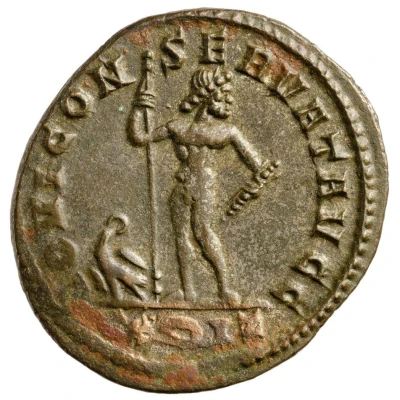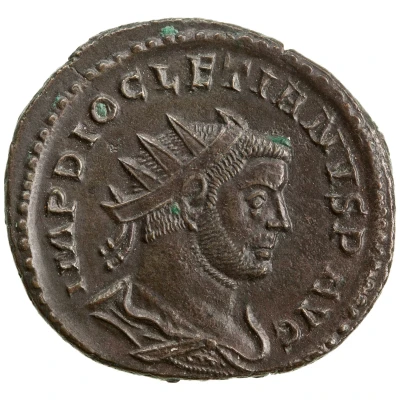Antoninianus - Diocletianus PAXX AVGG; Pax
| Silver | 4 g | 22.5 mm |
| Issuer | Rome › Roman Empire (27 BC - 395 AD) |
|---|---|
| Emperor | Diocletian (Gaius Aurelius Valerius Diocletianus) (284-305) Maximian Herculius (Marcus Aurelius Valerius Maximianus) (286-305) |
| Type | Standard circulation coin |
| Years | 292-290 |
| Value | Antoninianus (1) |
| Currency | Antoninianus, Reform of Caracalla (AD 215 – 301) |
| Composition | Silver |
| Weight | 4 g |
| Diameter | 22.5 mm |
| Shape | Round (irregular) |
| Technique | Hammered |
| Demonetized | Yes |
| Updated | 2024-10-05 |
| Numista | N#305695 |
|---|---|
| Rarity index | 100% |
Reverse
Pax, draped, standing left, holding Victory on globe in right hand and sceptre in left hand.
Script: Latin
Lettering:
PAXX AVGG
C/-//-
Translation:
Pax Duorum Augustorum.
Peace of the two emperors (Augusti).
Comment
Mass varies: 3.29–4.61 g;Diameter varies: 21.5–23 mm;
Source:
Online Coins of the Roman Empire (OCRE)
Interesting fact
One interesting fact about the Antoninianus - Diocletianus coin is that it was issued during a time of economic reform and monetary stabilization in the Roman Empire. The coin was introduced by Emperor Diocletian in 292 AD as part of his efforts to address inflation and restore confidence in the Roman currency. The coin's design, featuring the goddess Pax (Peace) on the reverse, symbolized the emperor's focus on establishing peace and stability throughout the empire. Despite its silver content, the coin was not widely accepted and was eventually replaced by other coinage. This fact highlights the challenges and complexities of managing a large and diverse empire like the Roman Empire, where economic and political stability were closely intertwined.



